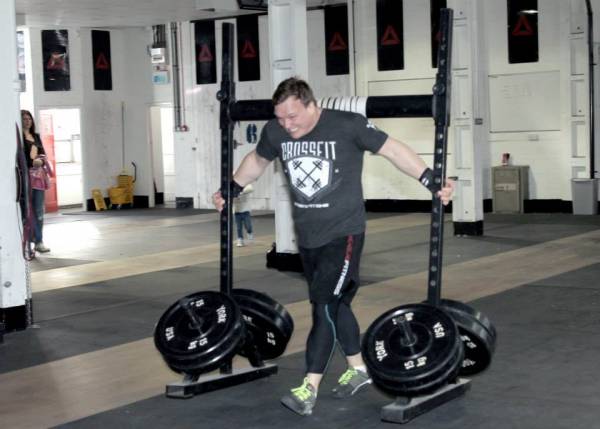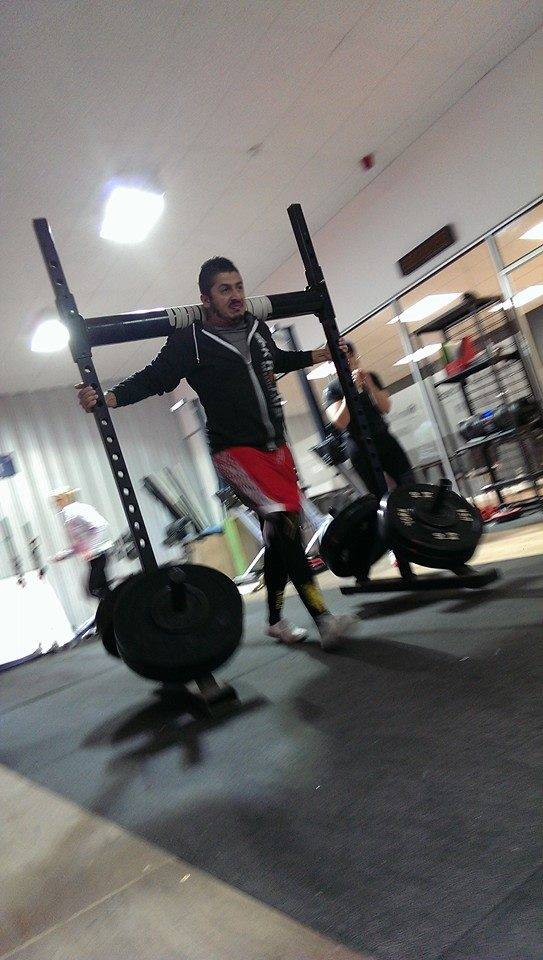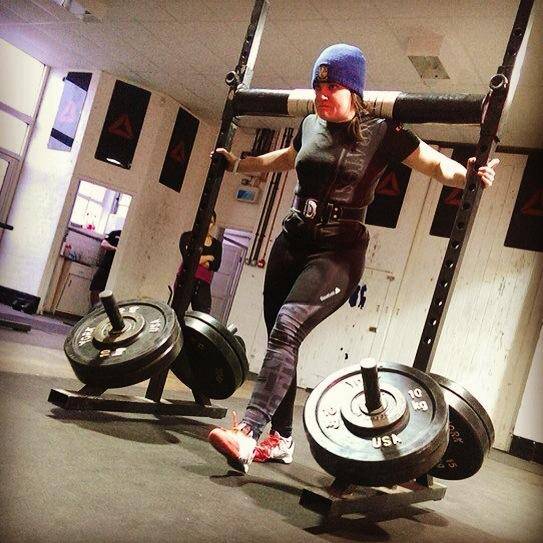Click Here to Try Our Free Strongman Workouts
I’ve been thinking about the most useful way to break strongman training down into relevant chunks for you. After much deliberation, I’ve worked out that the best approach is to split the events down by equipment. Each piece of strongman equipment has many unique aspects about the way it is used. For example, yoke carries and farmer’s walks are both weighted carries, and share some similarities, but are decidedly different pieces of equipment with numerous noteworthy points to discuss.
I’ve also noticed there are a lot of sites out there for experienced strongmen, and even more resources for those who are just beginning their strongman journey, but there’s not a lot of quality information for the intermediate strongman. So I am creating a new strongman series based on providing decent and valuable information aimed at an intermediate level of lifter. I am including a few basics to get the beginners up to scratch. But don’t be put off by the start if you’re more advanced than that. Simply skip the first few sections and take a look at how best to train with the yoke, the standards to aim for, and the technique tips.
Of course, not everyone has access to strongman equipment. Check out my article on ways to train strongman in the gym if this is you. Through this series, my plan is to provide you with perspective on which pieces of equipment may be particularly valuable to you.
The Yoke: Introduction
A yoke is a large metal frame with a crossbar. Each of the four corner of the frame can be stacked with weight. Depending on the manufacturer and exactly specifications, each yoke will be slightly different, but there are no major different types of yoke. However, some yokes are designed as multi-purpose “lifting stations” and double up as squat rack and sled.
The crossbar is adjustable to cater for individual height differences. Some crossbars are thicker than others. You may find the thicker ones more comfortable on your back as the load is spread over a wider area.
The most common way to use the yoke is to pick it up and walk with it, with the crossbar resting on your back. This is what most people mean when they refer to a “yoke carry” or “yoke walk.” This is how you will see a yoke used in competition the vast majority of the time, and what this article will focus on. However, you can also perform a number of other carries with a yoke, including Zercher and overhead carries.
The objective with any of these carries is to move heavy weight over a long distance quickly. Translated to a standard yoke carry, this means taking small and fast steps in order to cover the most distance in the least time with the heaviest weight.
Benefits of the Yoke Carry
Getting under a heavy yoke will instantly give you an idea of the benefits. The squat, deadlift, and bench press are the kings in the gym. They are certainly full-body movements, yet still don’t quite compare to picking up a heavy yoke and walking in terms of top-to-toe muscle recruitment. Given the fact that you’re putting your body under a much heavier load than it is used to, a heavy yoke walk elicits an awesome physical response in the body.

More specifically, yoke training will strengthen:
- Your upper back – That’s where you are holding the weight, after all. Expect your back to thicken up and get stronger.
- Your posterior chain – Glutes, hamstrings, and lower back are all working hard and will reap rewards.
- Your legs – And not just the posterior, this is a quad strengthener too.
- Your hips – Through the walk element, you will build strong and powerful hips.
Typical Events
Typical yoke-based events you will encounter are:
- Maximum distance covered in 60 seconds (scored by distance)
- 10-20m as fast as possible (scored by time)
- Medley – Yoke walk combined with another carry or event (scored by time)
How to Train
As with anything, going heavy all the time is not the best way to train, as tempting as it might be. It’s too taxing for your body, leading to risk of injury and long recovery times. Don’t forget that the objective here is to move a heavy weight quickly. So this is where your training needs to reside, most of the time.

Here’s a good way of splitting up your training:
- Heavy + short distance + low volume (10-15m)
- Mid weight + mid distance + mid volume (20-30m)
- Light + long distance + mid volume (40-60m)
I would always keep the volume low on these. It might feel okay or even good at the time, but high volume yoke walks will catch up on you in the days that follow. And I mean seriously catch up on you. I’ve known people to feel terrible for days after heavy, high volume yoke walks.
Standards
2 x bodyweight is something that is a realistic and achievable weight to get started with for men and women who strength train. For men 2.5 x bodyweight is a marker of good progress, but the next big landmark is 3 x bodyweight, and that’s a pretty advanced standard. For women, 3 x bodyweight is a superb standard. Get yourself to 4 x bodyweight and you are in the top one percent in the world.
Technique Tips
Get tight – If I told you I was going to place well over your max back squat on your back while you sat in a quarter squat position, and then I was going to ask you to stand up with it, I bet you would a) be scared and b) brace yourself hard. So why do I see so many people casually lift the yoke off the ground? Get tight for the lift off. Treat it like a max back squat.

Stay tight – Now that you have that tension, it’s your main job to keep it. Do not underestimate the importance of this, both for safety and effectiveness.
Experiment with yoke height – Having the yoke slightly higher can be useful for that little extra ground clearance, in case of any wobbles. But then you have to squat it up that little bit higher, and you may find the yoke swings more. Find what works for you.
Take small, fast steps – This will help you with the previous two points: staying tight and avoiding extraneous movement of the yoke.
Create a platform – Find a hand position on the yoke that allows you to create a shelf for the crossbar to sit on.
Bend the bar round you – Not literally. But make your best attempt to do so. Try to wrap the bar around your back and keep it there securely.
Focus on a spot – Don’t just look straight ahead of you, but focus on a spot. Then walk towards that spot.
The Yoke: Summary
A yoke is an essential piece of equipment for anyone serious about strongman training. A yoke carry is unlike any other strongman event, both in terms of the event itself and its effect on your body. Trained in the correct manner, it can be an incredible strength and power builder, not only for strength athletes, but also for athletes of any sport.
Click Here to Try Our Free Strongman Workouts
Photos courtesy of Strength Education.






